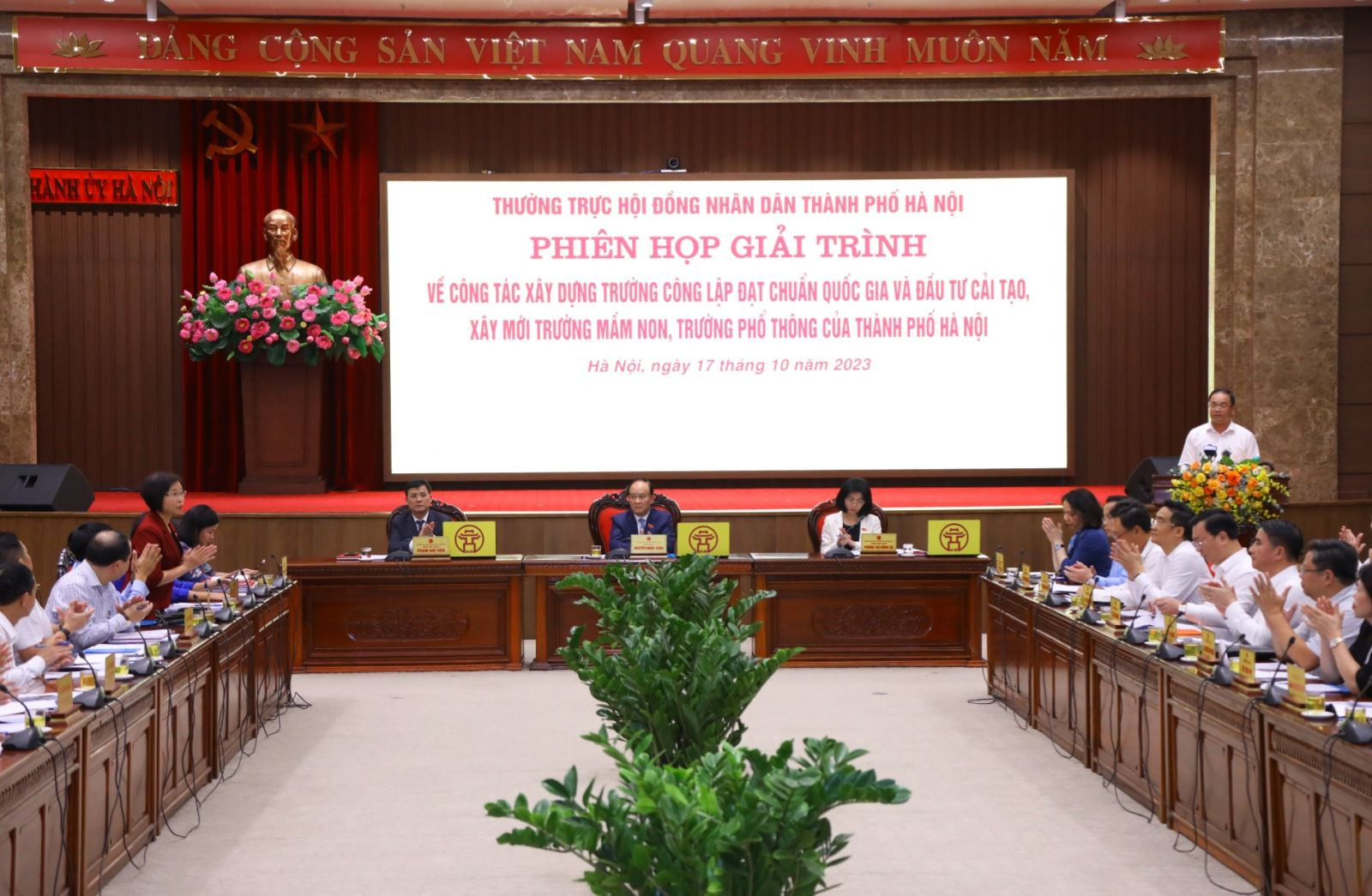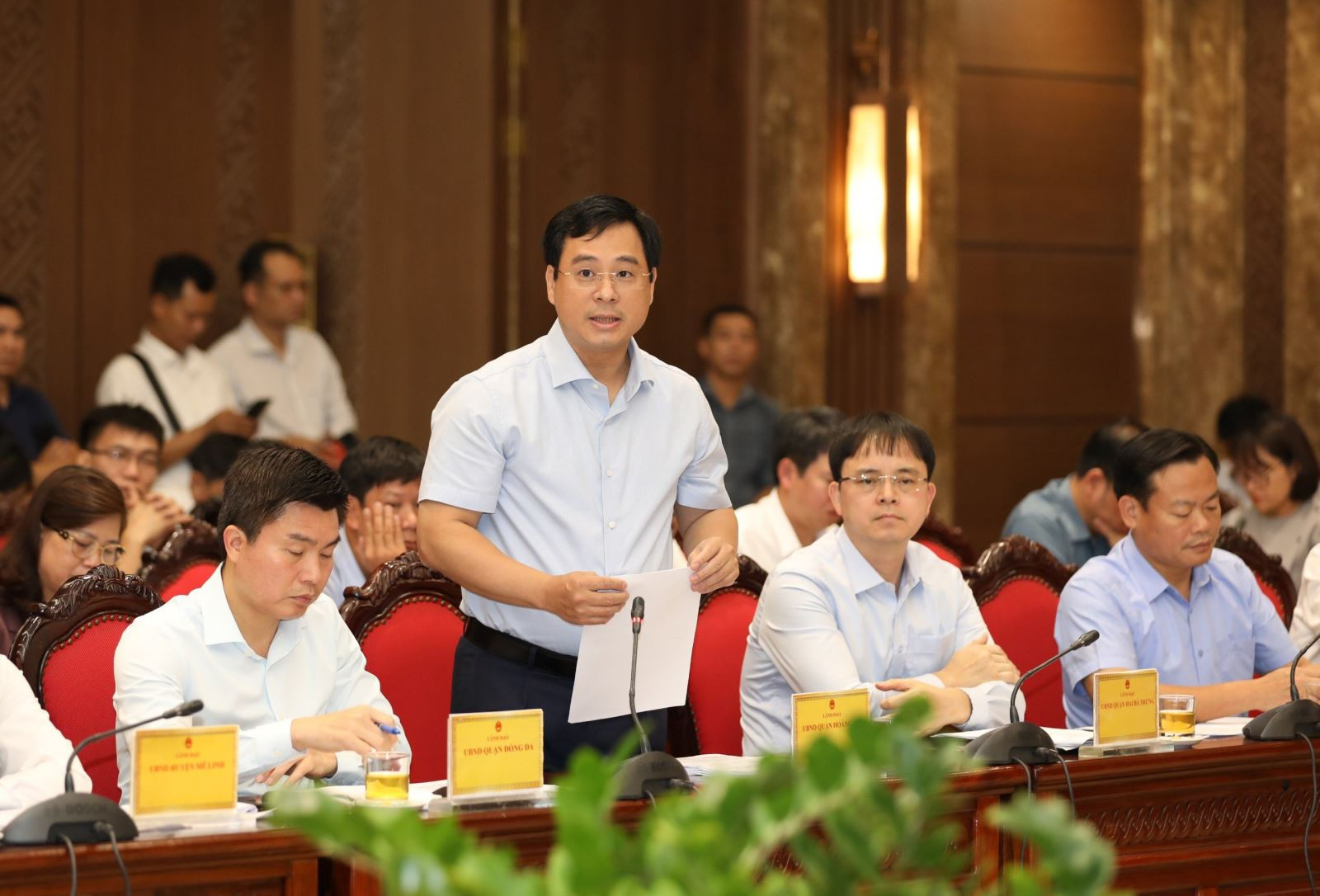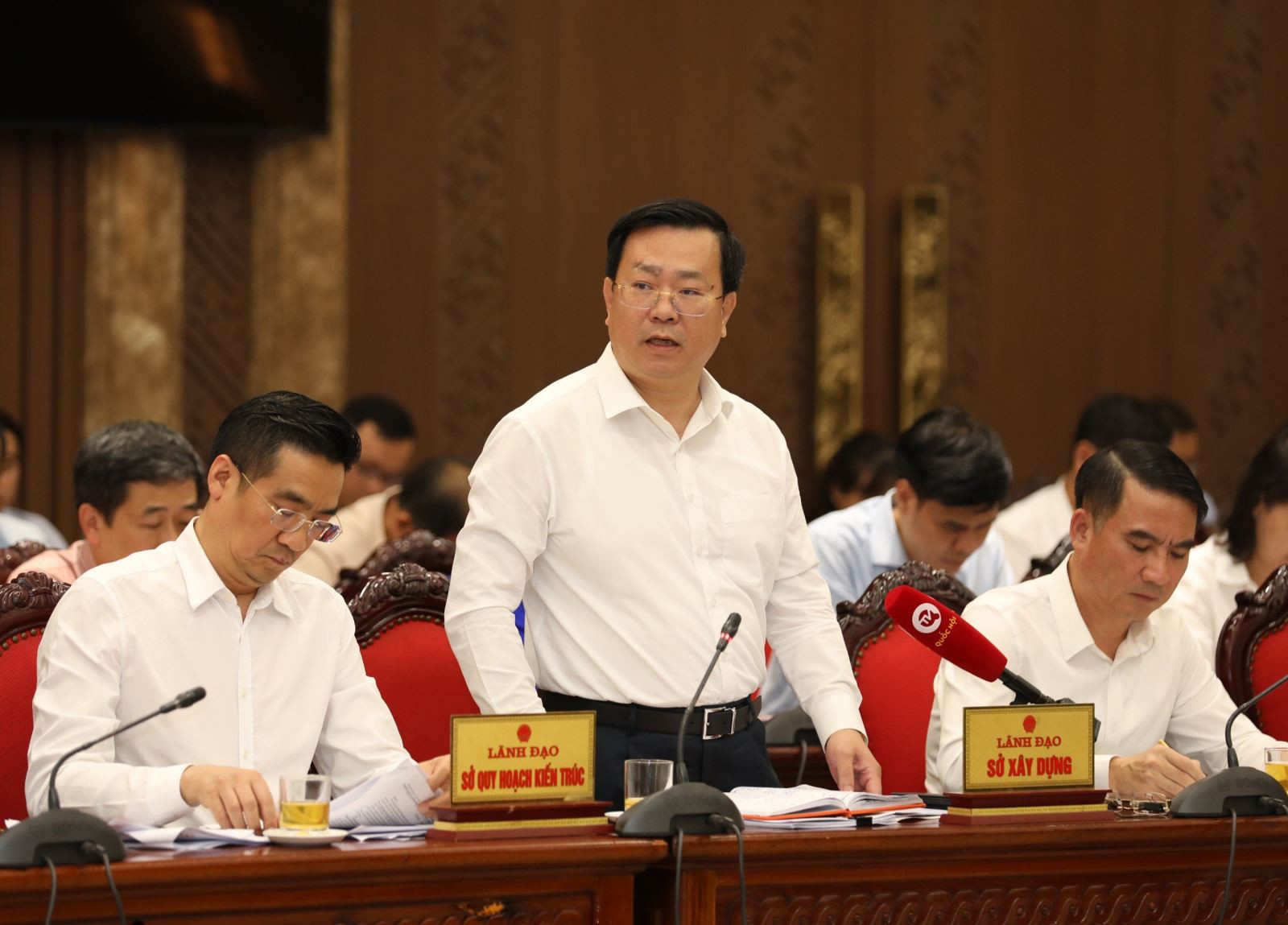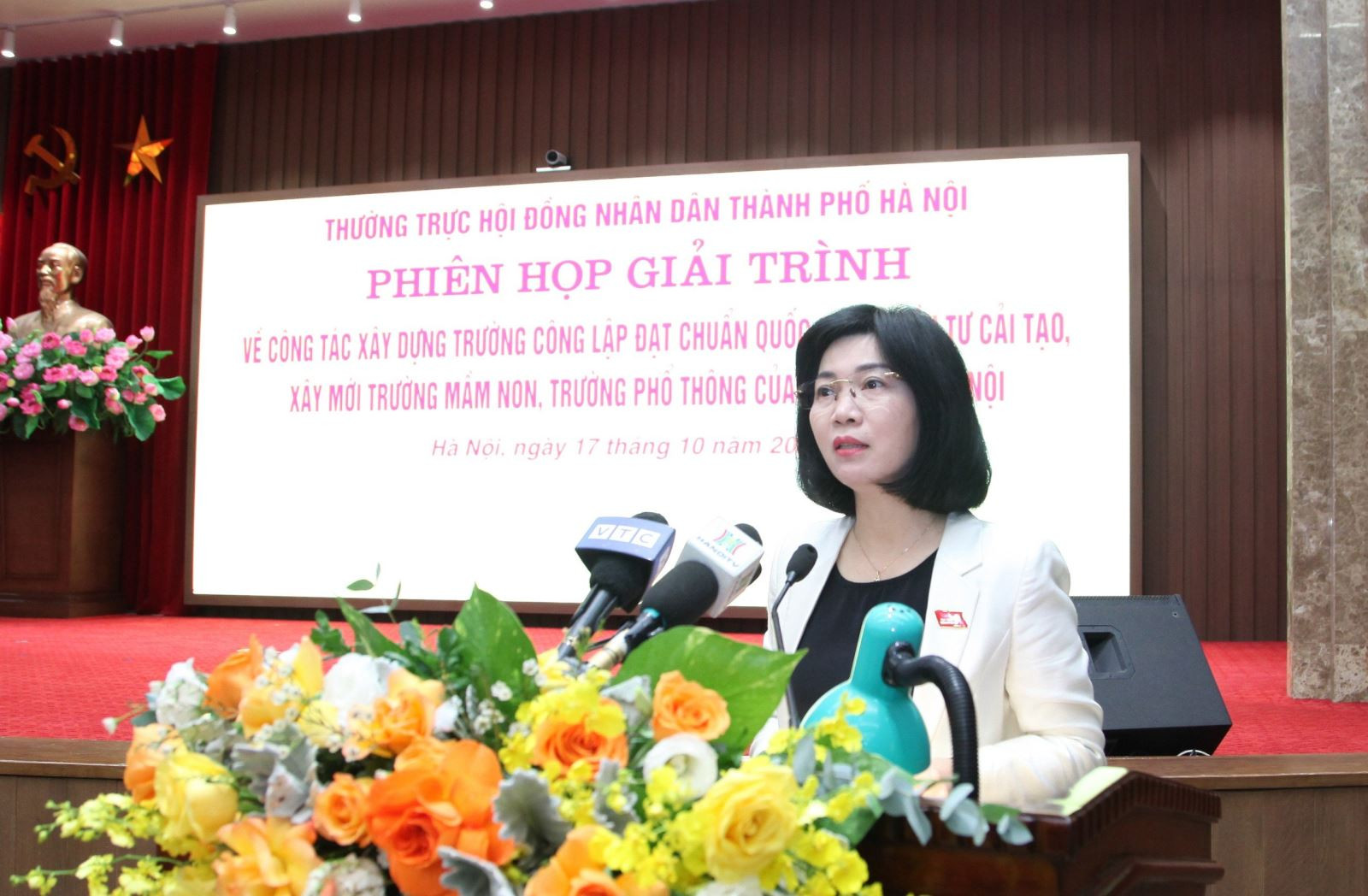According to the supervision of the Standing Committee of the Hanoi People's Council, the rate of public schools meeting national standards in Hanoi is only 72.7%, while according to the target of the Resolution of the 17th City Party Congress, it will reach 80 - 85% by 2025.
On the afternoon of October 17, the Standing Committee of the Hanoi People's Council held a session to explain the work of building public schools that meet national standards and the investment in renovating and building new kindergartens and general schools in Hanoi.
The explanation session aims to assess the current status of the construction of public schools meeting national standards and the investment in renovating and building new kindergartens and general schools; to detect and clarify existing problems, limitations, shortcomings and related difficulties and obstacles, and to determine the causes and responsibilities of all levels, sectors and units.
On that basis, propose and recommend solutions to competent authorities to remove difficulties and obstacles in the coming time.

Pressure of primary school admission
Participating in the questioning, delegate Lam Thi Quynh Giao (Nam Tu Liem District Group) said that the shortage of public schools in localities has existed for many years, causing overload in classrooms; thereby creating pressure on the work of enrolling students at the beginning of the school year, especially in Hoang Mai and Dong Da districts. She requested that leaders of departments, branches, and Hoang Mai and Dong Da districts provide solutions to overcome this problem.
Sharing the same view, delegate Nguyen Thanh Binh, Head of the Culture and Society Committee of the Hanoi People's Council, said that both inner-city and suburban school areas are overloaded, especially in primary and high schools. Delegate Doan Viet Cuong, Deputy Head of the Urban Committee of the Hanoi People's Council, questioned the Director of the Department of Construction about the difficulty of land for school construction in the historical inner-city area, and the feasibility needs to be clarified.
Responding to the question of delegate Lam Thi Quynh Giao, Chairman of Hoang Mai District People's Committee Nguyen Minh Tam said: Hoang Mai is the most populous district in the city, with about 700,000 people, including more than 100,000 children of school age; each year, the number of students increases by an average of about 4,000.
Admissions to primary schools faced many difficulties, and in some years, they had to draw lots for kindergartens. With the direction of the city and the implementation of many solutions by the district, this situation has been overcome. The district focused mainly on 4 measures: Establishing specific admission plans, implementing online admissions, accelerating school construction projects, and encouraging investment in non-public schools.

In the past 3 years, Hoang Mai district has built 23 new schools, renovated and repaired 25 schools to increase the number of classrooms. Non-public schools account for 19% of the total number of students in the area, helping to reduce the overload of public schools. However, Hoang Mai district is still short of 43 schools...
Meanwhile, Mr. Le Tuan Dinh, Chairman of Dong Da District People's Committee, said that the district is in need of 7 more public schools that meet national standards. The district has completed 13/33 projects and is preparing for 9 new projects to ensure the number of standard schools according to regulations. Dong Da District has limited land area for schools, currently, on average, 1 school has about 60 classes, with an average of 40-60 students per class...
Solution
Mr. Nguyen Minh Tam, Chairman of Hoang Mai District People's Committee, said that the current solution requires sufficient conditions in terms of land and capital. Regarding the increase in the number of public schools, the district has reviewed and proactively reported to the city to decentralize the district to adjust planning indicators; withdraw slow-moving projects to prioritize school construction. The district has allocated over 50% of capital investment in basic construction to build schools.
According to the Chairman of the People's Committee of Hoang Mai district, when the city approves urban planning, it is necessary to regulate the rate of public schools in urban areas; increase the density of the school network in accordance with the current population growth rate.
Regarding the solution, the Chairman of Dong Da District said that the district should focus on investing heavily in new projects. At the same time, there is a plan to merge small schools into large schools to ensure the number of schools meeting the required standards.
Providing more information on this issue, Mr. Vo Nguyen Phong, Director of Hanoi Department of Construction, said: the city has implemented land area standards, in which preschools are 8 m2/student, secondary schools are 6 m2/student. Districts need to implement synchronous solutions, including reviewing land funds for educational facilities.

Mr. Tran The Cuong, Director of the Hanoi Department of Education and Training, said that with 2.3 million students, Hanoi is the locality with the largest number of students in the country; each year, the number increases by 40,000 - 50,000 students. Therefore, the construction of new schools, including public and non-public schools, each year also requires 30 - 40 schools to meet the demand.
At the question-and-answer session, Ms. Phung Thi Hong Ha, Vice Chairwoman of the Hanoi People's Council, said that according to the report of the City People's Committee, up to now, the rate of public schools meeting national standards in Hanoi has only reached 72.7%, while according to the target of the Resolution of the 17th City Party Congress, it will reach 80 - 85% by 2025.
Ms. Phung Thi Hong Ha admitted that the issues of planning, investing in renovating and building public schools; revoking slow-moving projects that violate the Land Law to arrange for the construction of public schools; reserving land after relocation to build public schools... have been supervised by the Standing Committee of the City People's Council for many periods, but the implementation of the supervision recommendations has not had many results.

Based on the results of the explanations of departments, branches, districts and towns and the directions, roadmap and solutions; the Standing Committee of the City People's Council will approve the conclusions of the explanation session, organize the supervision of the implementation, in order to speed up the progress and improve the quality of the work of building public schools that meet national standards and investing in renovating and building new kindergartens and general schools in Hanoi, contributing to building the Capital as a true center of education and training of the whole country.
According to Tin Tuc newspaper